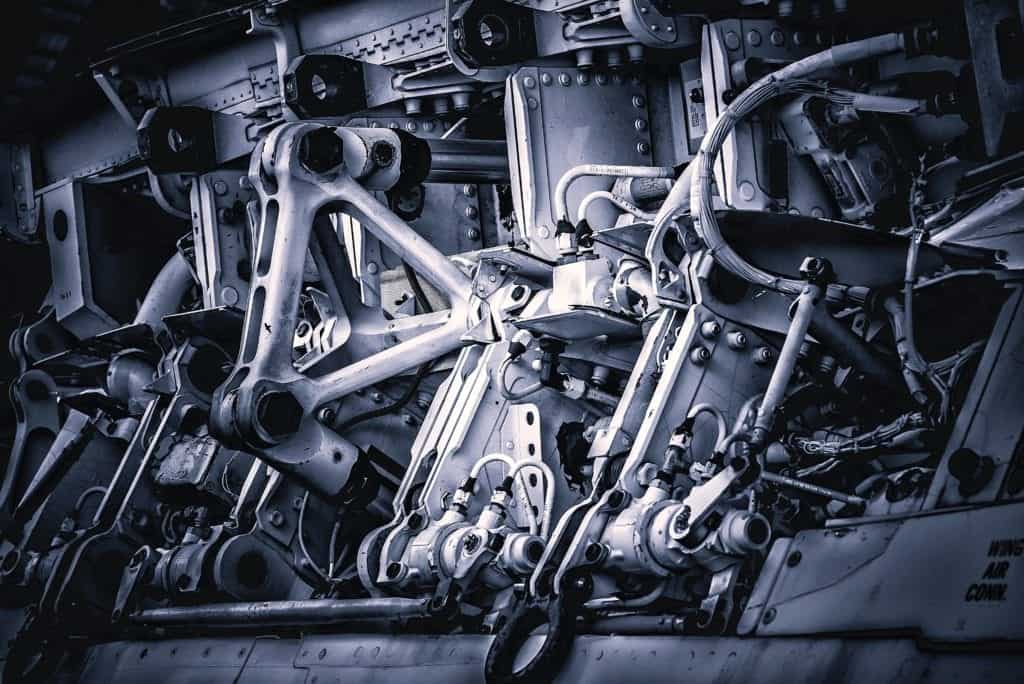Heavy-Duty motor oil is made of base oil and additives.
The base oil is what causes the actual lubrication, and the additives are there to supplement the oil by making its job easier.

The base oil can be mineral oil. Mineral oil comes out of the ground as crude oil and is then separated into things like diesel fuel and kerosene, etc. After you clean them up and separate them you can be left with the viscous stuff that becomes mineral oil for your base oil. You can also use synthetic oil for your heavy-duty motor oil as well. Synthetics are, in fact, oil that is derived from crude oil. It becomes synthetic when the oil is taken and altered on a molecular level. The benefit of synthetic oils is that they are often more likely to maintain their properties in varying temperature ranges and can also hold up better. That is why some people consider synthetic oils when they are looking to extend their drain intervals. The down side to synthetics can be the price, which is why synthetic/conventional blends exist.
If you can get enough of the performance from the synthetic part and get the cost savings from the conventional part, then you can end up with a much more cost-effective product that really exceeds what you could get from conventional oil.
Engine oils, in particular, are one of the most “additized” lubricants. Hydraulic oils and gear oils are next with the amount of anti-wear and extreme pressure additives they have. Engine oils have a lot of different additives and many of them in some pretty substantial quantities. Most of these additives are enhancing the oil’s performance.
Here is a list of additives used in heavy-duty motor oils, we won’t go into much detail, just enough to give you an idea about them. But, because there are so many additives, creating an engine oil is a diligent and exact endeavor.
Detergents prevent deposit formation
Viscosity Index Improvers reduce viscosity change with temperature
Dispersants keep solid contaminants in suspension in the oil
Anti-wear Agents minimize metal to metal contact; reduce wear
Oxidation Inhibitors control oxidation and formation of sludge and acids; minimizes viscosity increase
Rust and Corrosion Inhibitors prevent rust and corrosion of engine parts
Pour Point Depressants Lower pour points of oil for improved flow at low temperatures
Antifoam Agents reduce foaming in the crankcase
With all of these additives mixing together, getting the balance right will prevent one additive from canceling out another additive. That is why we recommend consulting your provider before adding lesser-known “oil boosters.”

There are two major industry groups that test the specifications of heavy-duty motor oils:
The API tests the performance and quality of motor oil.
The SAE tests the viscosity and assigns a viscosity designation, like 15W/40.
The API has been classifying oils since 1954 when there were hardly any additives. As duty size, horsepower and emissions have increased over time on engines, the oils have been formulated to change with them. The most recent API quality levels are:
These new designations were proposed by the engine manufacturers, to pair with their new engine designs.
The connection with the fuel economy and engine oils is friction. The friction we’re talking about here is called solid friction, which is a problem inside of an engine.
There are a lot of potential friction points inside of an engine including:
Much like the microscopic peaks of a solid surface rubbing against the peaks of another surface and causing heat and wear, fluid friction is caused by oil molecules rubbing against each other and generating heat.
Is it possible to further reduce fluid friction?
It is possible to reduce fluid friction and increase the fuel efficiency of motor oil.
Lubricant Mileage Improvements are From:
Lower Viscosity Grade
One example of lowering the viscosity grade is changing from 10W/40 to 0W/20. As you lower the internal viscosity of the oil, you lower the friction. Just like it’s easier to swim through water than it would be to swim through honey, a lower viscosity allows freer movement in oil. That difference is called low shear viscosity.
Decreasing High Temperature / High Shear Viscosity
High temperature / high shear viscosity is measured under more extreme conditions. There are 3 machines that the SAE invented to measure high temperature and high shear viscosity. Each of these machines tests the viscosity under 300 degrees F and forces it through tubes that are smaller than a human hair, at high pressure. The purpose of the tests is to create a situation that is closer to the high-friction situation in an engine, especially like those high chances of contact places where we can have metal to metal contact and rubbing. It seems likely that where there is only room for a very thin film of oil between moving metal parts, all oils would behave the same but they don’t. There is a significant difference between the two types of oil, mineral oil and synthetic oils. Even within those 2 categories, not all mineral oils will act the same, nor will all synthetic oils behave the same, but the synthetic motor oils will give you better HT/HS results. Another variable that can affect the HT/HS sheer is the additives. If you want your additive to improve your HT/HS number, you must be very selective about what you decide to use.
The potential trade-offs to are:
Phillips 66 FA-4 Testing:
○ Lots of variance with test methods
■ Professional Driver
■ Closed Course
■ Structured acceleration and deceleration profile
○ Are FA-4 oils up to the task?
■ Real fleet testing
Parameters of Phillips 66 FA-4 Testing:
The results of these tests throughout the 2017 testing phase were significant. If a fleet of garbage trucks, for example, were to switch from 15W/40 to Phillips 66 FA-4, their mileage, on a class 6 truck, would go up 1.5 – 3%, depending on the version of oil they chose. On a class 7-8 truck, their mileage would go up 1-2%. For a fleet of vehicles that are in motion all day long, every day, that type of savings can really add up quickly!
Durability testing requires a fresh engine for each test. The test runs for 30 hours at 50% throttle and from 30 to 200 hours, the throttle is set to 80%. This is a loaded test, putting the motor under additional strain, for 8 days non-stop.
Throughout this test, they are measuring for scuffing in the cylinders, because that’s where things can go wrong, in the cylinder, in between the rings and the liner.
Competitor Results:
There is a marked difference in the liners between the Guardol FE and the Delvac Super FE. At 31 hours, when the Delvac test ended the liner was thoroughly scuffed on the inside. The Guardol FE, on the other hand, made it to the 200-hour mark, when the test was supposed to finish, and because it was running so well they let it continue, and it ran all the way to the 330-hour mark and the liner was still not scuffed! Again, these were not bench tests, these were fired engine tests.
Phillips 66 arranged for a fleet to run exclusively on their Guardon FE 10W/30, while the product was still going through its testing phase and soon we will be doing an engine tear-down of one of these trucks. It will be a Volvo D13 engine, with 750,000 miles. I am very curious to see what this engine that has only run on FA-4 oil, looks like on the inside. One of the reasons I’m so interested is because initially, Volvo said “No FA-4, we don’t want it at all” and yet we have a Volvo that has been running it for 750,000 miles and has had no problems.
Real World Fleet Testing of Phillips 66 FA-4 Oil:
These vehicles have been running across the country in the real world, not around an oval-shaped flat track. They experience different terrains, temperatures and weather conditions across the country for 6 years. The engines that we’ve torn down have not had any anomalies in the engine or the oil in any of our tests. For instance, when we tore down a 2014 Detroit Diesel DD13 with 900,000 miles on it, there were no problems in the main bearings, the oil pan or the cylinder liners, as a quick example (there were no problems throughout the engine, but the slides for each part would have been excessive).
Both of our suppliers, Phillips 66 and Chevron have limited warranties stating that if you have an engine failure caused by their oil, they will replace your engine: They are that confident in their products. Phillips 66, however, has supplemented that warranty with a specific FA-4 oil warranty that says if your Detroit Diesel engine is as old as 2010, they will cover it. If your Cummins, International, Volvo, or Mack or Paccar is 2014 or newer, they’ll cover it. So, even if the engine manufacturer won’t cover engines that are running on the new FA-4 motor oils, Phillips 66 and Chevron will make sure you’re covered.
Both Phillips 66 and Chevron have mileage calculators that will show you what your fuel economy will be, based on your truck and the oil you choose. Our Senergy Reps have an app that can show you both competitors at a glance and will also take other factors into consideration, like your price per gallon, your miles per year, but also how often you change your oil and what your crankcase capacity is.
The next classification has been proposed and they are expecting to begin testing on in 2021 and should have it ready within a few years. These upcoming oils will likely be focused on improving greenhouse gas emissions, reduced engine wear and operating safely at high temperatures.


